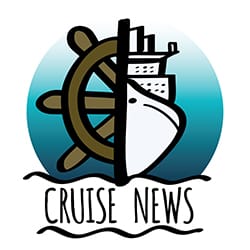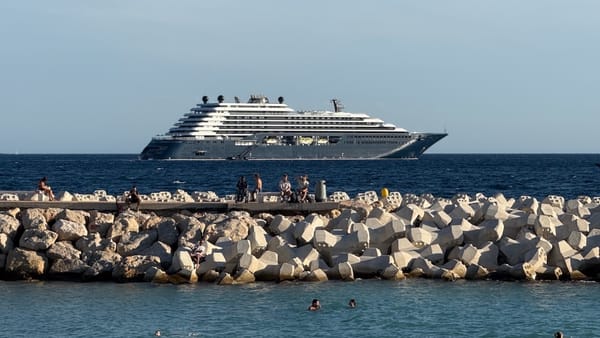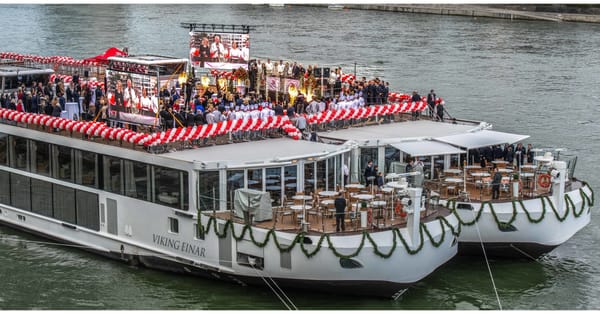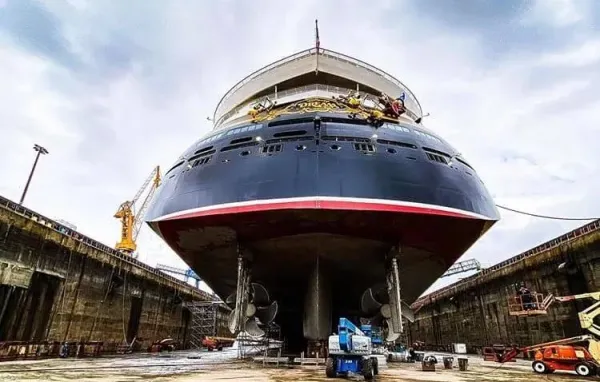Carnival Posts Record Q2 Profits and Margins as Cruise Demand Surges
Carnival’s strong second-quarter results highlight a resilient cruise market, with record margins, robust bookings, and strategic fleet investments supporting post-pandemic industry recovery.

Carnival Corporation has reported a significant milestone for the second quarter of 2025, surpassing analyst forecasts and marking a historic rebound in the cruise industry’s post-pandemic trajectory. The company announced net income of $565 million and adjusted net income of $470 million, alongside revenue of approximately $6.3 billion. Customer deposits reached a new high of $8.5 billion, reflecting sustained demand for cruising as a value-oriented vacation option.
Record Financial and Operational Results
During the quarter ended May 31, Carnival achieved some of its highest margins in nearly two decades. Analysts also noted a record adjusted EBITDA of $1.5 billion, up 26% year over year, driven by strong ticket prices, close-in bookings, and elevated onboard spending. The company’s CEO, Josh Weinstein, credited the performance to “our amazing team” and emphasized the affordability of cruising, citing it as a core driver of resilient demand. “The quarter’s margins were the highest in nearly 20 years,” Weinstein said, pointing to robust consumer interest, even as broader economic uncertainties persist.
These results have allowed Carnival to exceed its own 2026 financial goals 18 months ahead of schedule, with adjusted return on invested capital and adjusted EBITDA per available lower berth day both hitting multi-year peaks. The company has raised its full-year 2025 earnings forecast, now projecting adjusted EPS of around $1.97 versus prior guidance of $1.83. Adjusted net income is expected to rise by more than 40% compared to 2024.
Elevated Demand and Pricing Power
Carnival executives reported that occupancy has remained high across the global fleet, and cumulative advanced bookings for 2026 are in line with the record-setting pace of 2025. Pricing levels likewise remain elevated, with travelers increasingly viewing cruises as an attractive alternative to land-based vacations. Close-in demand, which refers to reservations made shortly before sailing, proved particularly robust; last-minute bookings and high onboard spending bolstered the company’s net yields.
According to Weinstein, there has also been a surge in onboard spending categories like dining, beverages, and excursions, indicating that passengers continue to prioritize “the convenience and luxury of cruise amenities.” This trend has helped Carnival achieve its highest second-quarter margins in nearly two decades while positioning it for strength in the critical second half of the year.
Fleet Growth and Modernization
A central component of Carnival’s strategy involves targeted fleet expansion and modernization. Multiple newbuilds are underway, including LNG-fueled Excel-class ships slated for delivery to Carnival Cruise Line beginning in 2027 and 2028, and the Star Princess set to join Princess Cruises in late 2025 for Mediterranean and Caribbean itineraries. Other brands within the Carnival portfolio, such as AIDA Cruises, have placed orders for mid-sized vessels, underscoring the company’s move to balance capacity with sustainability through energy-efficient designs.
Carnival also completed a significant phase of fleet optimization following the challenges of the global pandemic. Recent sales of older vessels helped streamline operations, ensuring the newer ships incorporate advanced technology, focus on environmental efficiencies, and appeal to evolving consumer preferences. Additionally, Carnival Cruise Line plans to open Celebration Key, a private destination in the Bahamas, in July 2025, providing an exclusive travel experience as part of its broader product pipeline.
Balance Sheet Improvements
Within the past year, Carnival refinanced nearly $7 billion of debt at favorable rates, aiming to improve its credit profile and move closer to an investment-grade rating. The company also enlarged its revolving credit facility to $4.5 billion. Analysts and company officials alike view this progress as a vital part of Carnival’s broader strategy to restore its balance sheet in the wake of pandemic-related disruptions.
Carnival attributes its financial recovery, in part, to disciplined capacity growth, selective newbuilds, and elevated demand, all contributing to stronger pricing. As shares rose nearly 8% on the day of the earnings announcement, investors signaled confidence in the company’s approach.
Geopolitical and Safety Considerations
Though geopolitical tensions and isolated maritime incidents have posed risks for the broader cruise industry, Carnival reports minimal exposure to high-conflict regions, including the Middle East, and maintains contingency plans for areas potentially impacted by global events. Recent mishaps elsewhere, such as a ferry collision in Croatia and a marine pilot’s injury in Belgian waters, illustrate the complexities of worldwide cruise operations. Nonetheless, Carnival continues to emphasize safety measures across its fleet and itineraries.
Frequently Asked Questions (FAQs)
What were Carnival’s key second-quarter financial results?
The company posted revenue of about $6.3 billion, in addition to $565 million in net income and $470 million in adjusted net income. Adjusted EBITDA reached a record $1.5 billion, which was 26% higher than the previous year.
How has Carnival managed its financial recovery?
Carnival leveraged strong onboard spending, close-in bookings, and higher ticket prices to deliver some of its best margins in nearly 20 years. These factors, along with disciplined cost management and capacity optimization, allowed the company to surpass its 2026 targets ahead of time.
What fleet expansions are planned by Carnival Corporation?
Several Excel-class LNG-fueled ships will join Carnival Cruise Line starting in 2027 and 2028, while Princess Cruises is slated to receive the Star Princess in late 2025. Additional mid-sized ships have been ordered for AIDA Cruises, highlighting Carnival’s shift toward modern, energy-efficient vessels.
How does onboard spending contribute to Carnival’s profitability?
Significant increases in spending on dining, beverages, entertainment, and excursions have positively impacted Carnival’s net yields. These onboard revenues complement higher ticket prices and underscore the appeal of cruise vacations as an all-inclusive experience.
How does Carnival handle geopolitical and safety challenges?
Carnival minimizes exposure to high-risk regions and maintains contingency plans for potential conflicts. The company also underscores strict safety procedures to address operational risks, learning from incidents experienced across the broader maritime sector.
With robust financial performance, heightened consumer demand, and strategic fleet upgrades, Carnival Corporation is poised to capitalize on resurgent cruising trends well into 2026 and beyond. Company leadership remains focused on disciplined expansion, balance sheet repair, and delivering a consistent vacation value that appeals to travelers worldwide.




